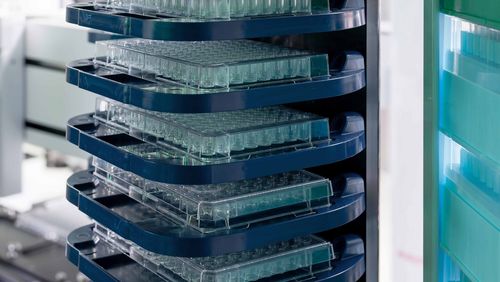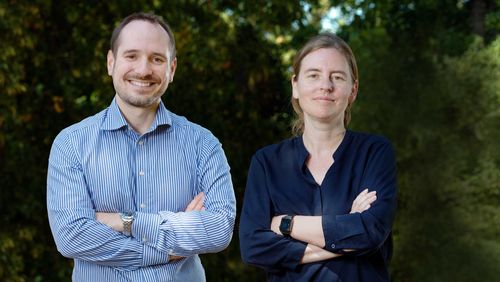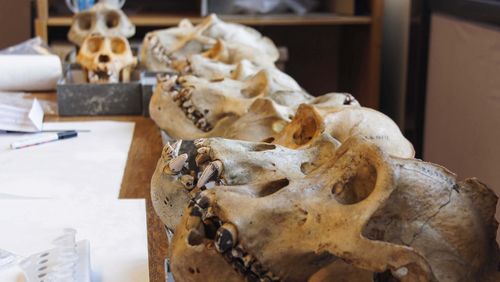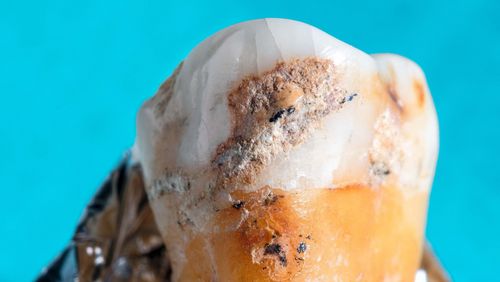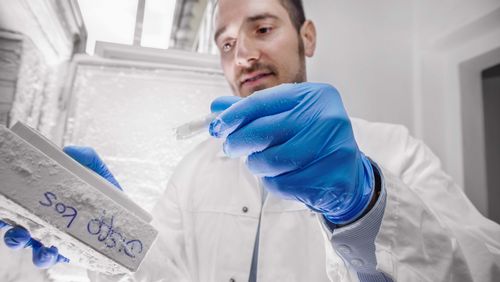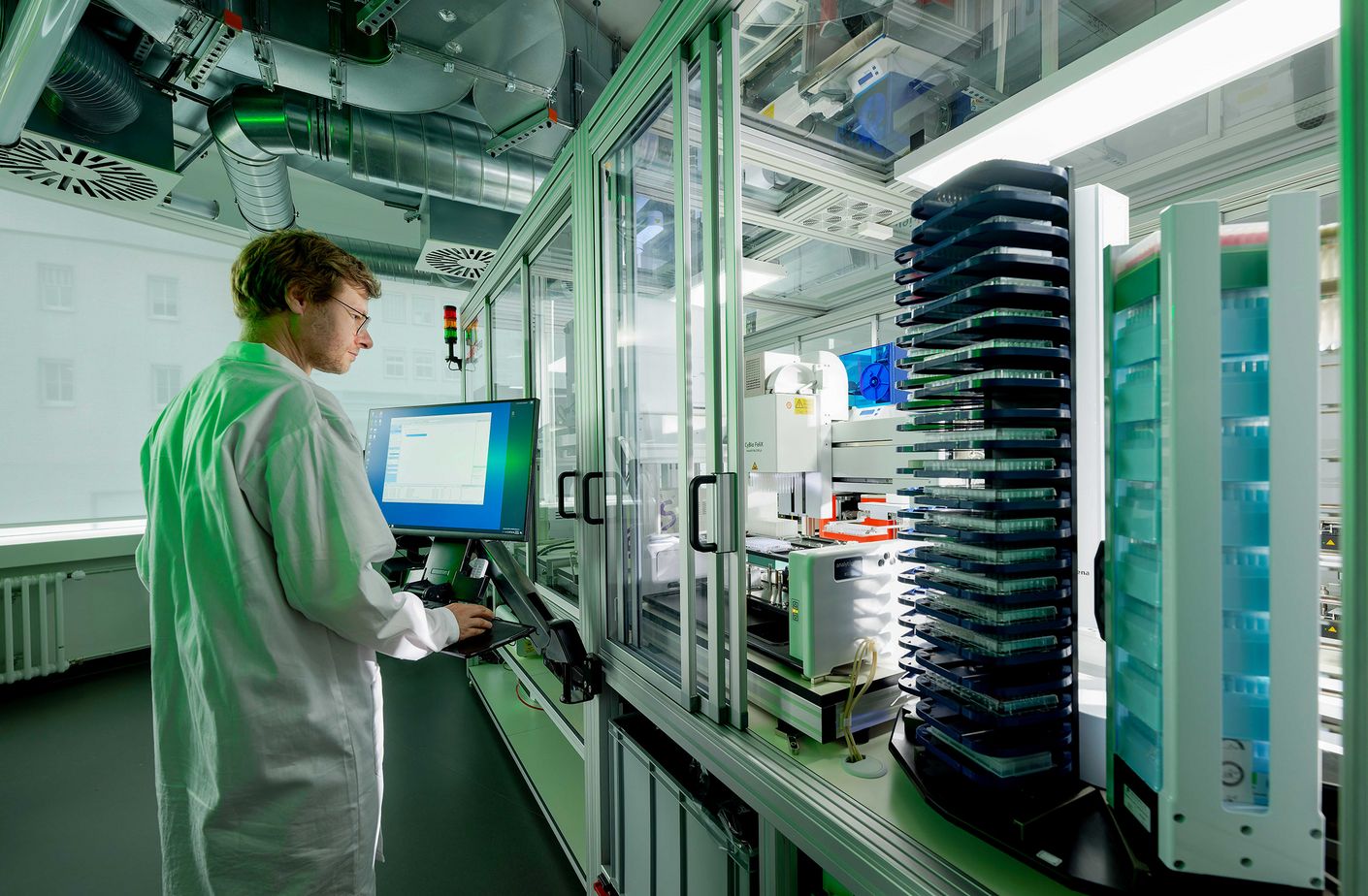
Harvests from the Stone Age
Last year, researchers in the palaeobiotechnology project achieved a major milestone: they found and “resurrected” ancient microbial compounds—some of which date back 100 000 years. This is clear proof that their bold idea works.
Conducting research is a little like gardening. It takes a great deal of patience—the harvest comes well after the sowing. In the labs of the palaeobiotechnology project in Jena, the metaphorical act of sowing lasted three years. Now, however, researchers in the team of chemist Pierre Stallforth and molecular archaeologist Christina Warinner can look forward to reaping the fruits of their labour. Last year, they demonstrated their project will indeed deliver the desired results: for the first time, they recreated natural products found in the dental plaque of early humans—natural products produced by bacteria up to 100 000 years ago.
For their study, which was published in the top-tier journal Science, the team examined dental calculus found in Neanderthals who lived between 40 000 and 100 000 years ago, as well as the dental calculus of humans who lived between 150 years and 30 000 years ago. The researchers applied specialized methods to sequence billions of ancient DNA fragments and then assemble them—much like puzzle pieces—into the reconstructed genomes of numerous bacterial species.
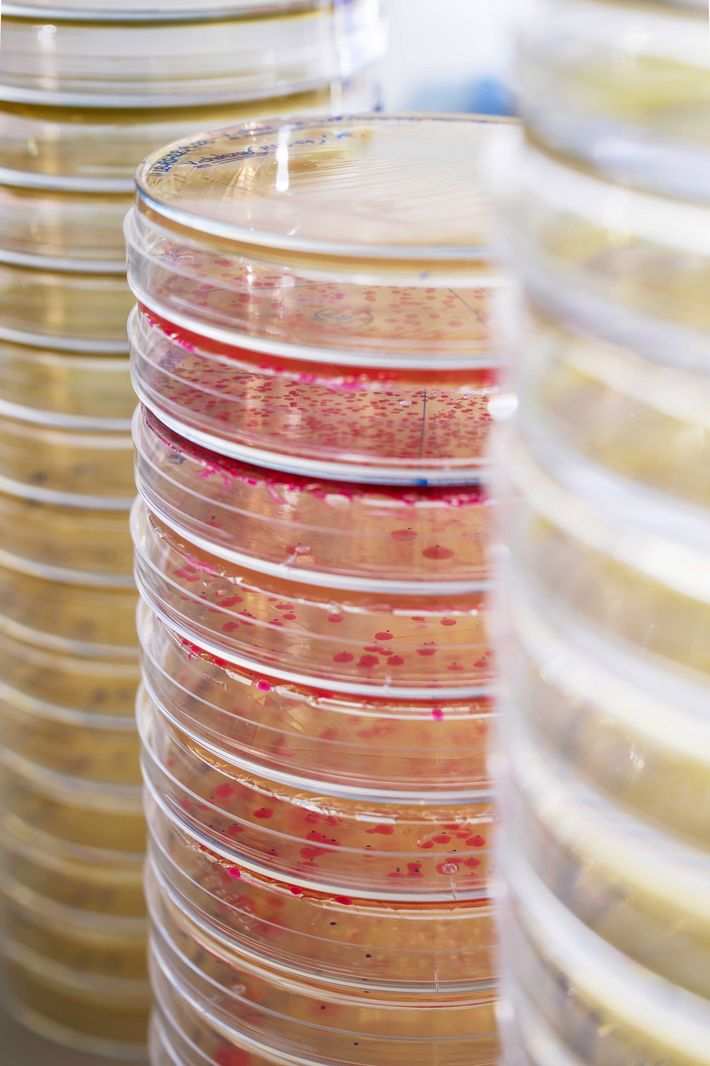
New—and relevant—research field
The team worked with one particularly well-preserved genome of a green sulphur bacterium to recreate a so-called biosynthetic gene cluster—a genetic blueprint for enzymes that produce natural products or small molecules. Using state-of-the-art biotechnological methods, they inserted these genes into living bacteria. Et voilà! The bacteria formed functioning enzymes that produced two previously unknown microbial natural products. Tens of thousands of years ago, a living bacterium most likely used these substances for regulating photosynthesis.
The publication represents a major milestone for Warinner and Stallforth. “We’ve demonstrated that our idea is feasible: we can indeed find ancient microbial substances and reproduce them,” Christina Warinner explains, adding that the response from the research community was extremely positive. “Not only did our colleagues rate our publication highly,” Warinner says, “they also believe that our approach is very relevant.”
In order for this type of interdisciplinary project to work, many different pieces must fit together. For Pierre Stallforth, the collaboration between the research groups was a personal highlight. He says it was fascinating, yet also challenging, to find a common language among archaeologists, chemists and bioinformaticians.
High-speed analyses
Now the team can move to the next phase and, so to speak, harvest their DNA crop. Stallforth names two developments in particular that are making this possible. First, bioinformaticians working in the project have developed a screening tool called nf-core/funcscan that enables the rapid screening of millions of reconstructed gene sequences to identify those capable of producing natural products. And second, the Leibniz Institute for Natural Product Research and Infection Biology in Jena has built a one-of-a-kind automation platform for standardised, high-throughput testing of newly discovered molecules—to determine a molecule’s antibiotic or antifungal effect, for example.
The devices on the robotic platform have several advantages: in addition to working round the clock, they can also fill and read microtiter plates with between 96 and 384 miniature “wells” in just a single step. “This means we can test 100 to 1000 times more samples than previously,” says Stallforth. In addition, errors and irregularities during pipetting are excluded when robots—and not humans—do the job. “In future, we can draw from all these resources,” Stallforth sums up.
The project’s next goal is examining as many samples as possible—but also understanding what purpose an ancient natural product had in its natural environment. For Christina Warinner, this aspect is key: “The more we know about an compound’s function, the more new applications we’ll find.” It will be very interesting to see what new products the palaeobiotechnology team will, in future, retrieve from the past.

